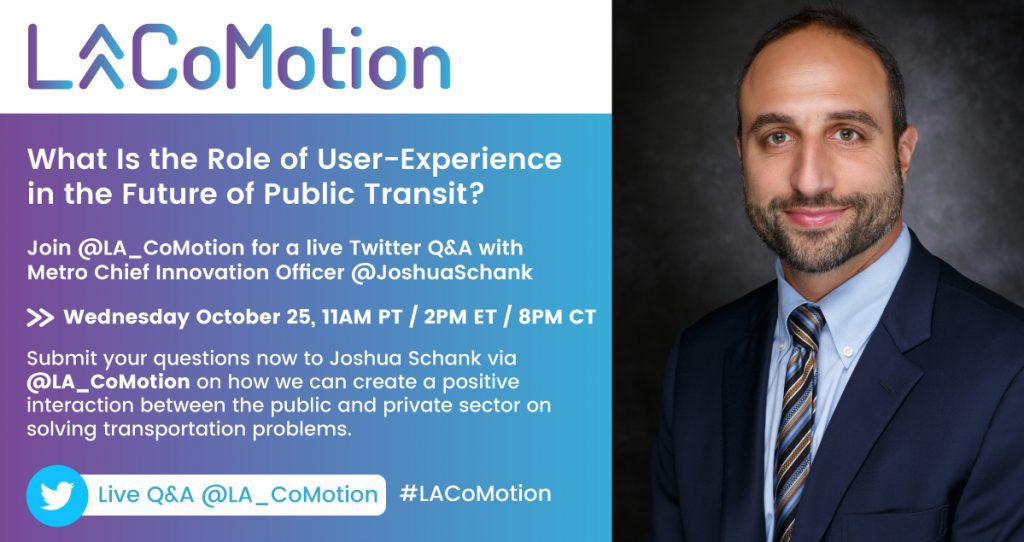
User-Experience & the Future of Public Transit
mars 1, 2018 — Uncategorized
At Metro we recognize that the future of transportation is being shaped by customers and driven by their choices and preferences.
More than ever before, customers want to be in control. They want to plan their trips, select their payment methods and get the service they want, when and where they want it. As a result, customer expectations are influencing the way private and public providers plan and design transportation services and systems.
Around the globe, private sector “new mobility” services are rapidly changing the transportation landscape by expanding the types of travel options available to customers using internet-enabled smartphones.
In California, since the introduction of Transportation Network Companies (TNCs) into the market in 2013, dozens of government bodies have teamed up with private sector ridesourcing companies on joint marketing campaigns to promote on-demand services. For example, Metro’s Office of Extraordinary Innovation (OEI) worked with Uber to promote on-demand, first-last mile service to carry Metro customers to Expo Line stations when the line opened to Santa Monica in May 2016.
Some agencies have developed platforms in which customers can schedule trips based on real-time data and utilize complementary on-demand service. The most recognized California-based pilots have been in the Bay Area at the Alameda Contra Costa Transit District and the Santa Clara Valley Transportation Authority.
At Metro we believe leveraging new technology must be at the forefront of how public transit meets and exceeds the demands of existing and future customers.
With that in mind, Metro plans to partner with the private sector to design and deploy a new service that merges the best features of public and private sector offerings. Together with our private partners, we intend to plan, design and implement a new on-demand service to complement Metro and connect more people and places to our existing system. The new service will be responsive to customer demand by providing riders with the ability to reserve and pay for a ride in real-time. The new service will perform like a continuous vanpool and will dynamically route vehicles to meet Metro rider demand, saving time compared with fixed-route options, and removing single-occupancy vehicles from our streets and freeways.
The new public transportation service will be called Metro MicroTransit, because it will be used for trips under 20 minutes in vehicles that are smaller than traditional transit buses.
Among our goals will be to learn if this type of public transit service can be useful in connecting current customers to existing public transit. A customer could use it as a means of accessing their local rail station, for example. However we also aim for this service to provide a complete trip solution for current and future customers. For example, Metro MicroTransit could be used for a trip to and from the local medical clinic within the service zone, as a more direct route than multiple transfers on fixed route services, and a more convenient and affordable alternative than a personal vehicle.
As part of this effort, Metro OEI has assembled an internal project team with staff and executives from across the Agency to advise and guide the pilot. Metro’s MicroTransit Pilot (MTP) is planned to operate for a minimum of two years with up to six months for an initial service feasibility study. The MTP is where private sector technology meets public sector policy goals, bringing the best of both sectors together for the common good.

On Wednesday October 25, Joshua Schank will take your questions live on Twitter to discuss the role of user-experience in the future of public transit. Tweet your question now to @LA_CoMotion and join the chat live on our Twitter page at 11AM PT.